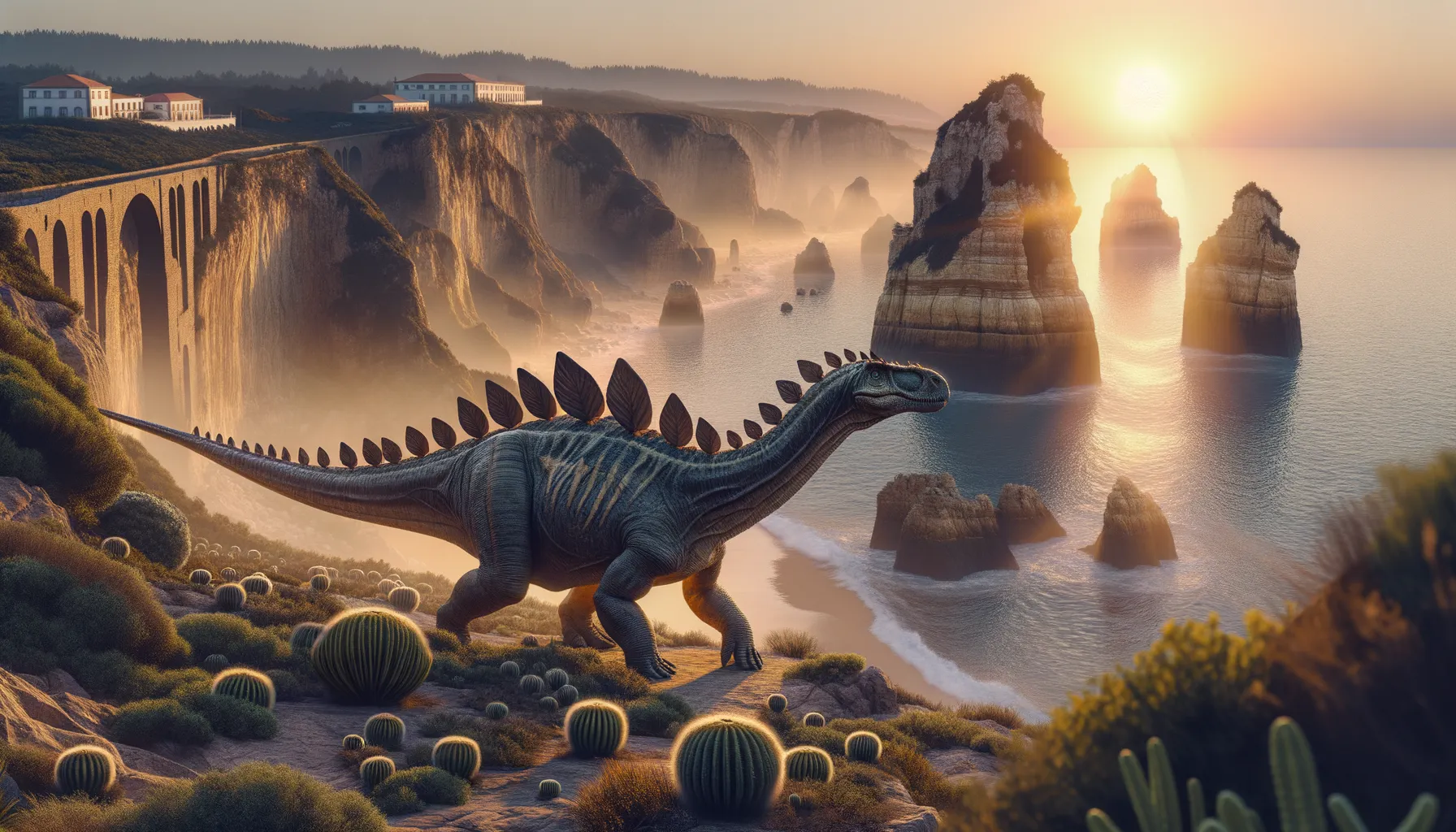
Lusitanosaurus
Ancient defender of lush Jurassic lands.
Period
Jurassic
Length
Measured around 5 meters long.
Height
Around 2 meters tall at the hips.
Weight
Approximately 500 kg to 700 kg.
Lusitanosaurus was an early plant-eating dinosaur from the Jurassic period, known primarily from fossils found in Portugal. It was one of the first known stegosaurians, a group of plated dinosaurs that were widespread during the Jurassic. Though not much is known about Lusitanosaurus due to limited fossil evidence, its discovery helps paleontologists understand the early development and diversification of stegosaurs in Europe.
Diet
As a herbivore, Lusitanosaurus fed on a variety of Jurassic flora. Its diet likely included cycads, ferns, and other low-lying plants. It probably used its beak-like mouth to neatly pluck vegetation.
Hunting
Lusitanosaurus, being a plant eater, did not exhibit hunting behavior. Instead, it focused on foraging for plant material. Its anatomy suggests it could have used its sense of smell to locate food.
Environmental challenges
Lusitanosaurus faced challenges like finding food in dense vegetation and avoiding larger predators like allosaurs. Changes in climate and vegetation patterns during the Jurassic could have affected its food supply. It might have had to migrate seasonally to follow accessible plant sources. Young dinosaurs would need to hide from predators while foraging.
Speed
Moderate, suitable for a medium-sized herbivore.
Lifespan
Estimated 20 to 30 years based on similar dinosaurs.
First discovery
First discovered in Portugal in the 1920s.
Fun Facts
- Lusitanosaurus is one of the earliest known dinosaur fossils to be discovered in Portugal.
- This dinosaur lived during the early Jurassic period, around 200 million years ago.
- The name 'Lusitanosaurus' means 'Lizard of Lusitania', with Lusitania being the ancient name for the region that is now Portugal.
- Lusitanosaurus is thought to be a herbivore, likely feeding on plants and low vegetation.
- Only a fragmentary skull has been found, so much about Lusitanosaurus remains a mystery.
- Although not much is known about its size, Lusitanosaurus is believed to have been relatively small compared to some of its giant dinosaur relatives.
- Lusitanosaurus contributes to our understanding of dinosaur evolution in Europe during the early Jurassic.
Growth and Development
Lusitanosaurus, like other dinosaurs, likely hatched from eggs. Its growth was possibly marked by rapid juvenile phases followed by slower development as it matured. Juvenile dinosaurs may have lived in groups for protection. Over the years, it developed bony plates on its back, similar to other stegosaurs, though its specific pattern remains unknown due to limited fossils.
Habitat
Lusitanosaurus lived in lush, forested areas of what is now Portugal. The environment was warm with plenty of rivers and lakes, supporting diverse plant life. This habitat provided ample food and protection. Such environments were ideal for its herbivorous lifestyle.
Interaction with other species
Lusitanosaurus likely coexisted with other herbivorous dinosaurs. Predators like allosaurs might have posed a threat, necessitating defensive behavior. Interactions with different species would be influenced by competition for food resources. Its bony structures could have been used for display during social interactions.
Natural lifespan
Lusitanosaurus had a natural lifespan of up to 30 years.
Reproduction
Lusitanosaurus reproduced by laying eggs, likely in nesting sites. Female dinosaurs may have laid a clutch of eggs, which they could have guarded or concealed among vegetation. Hatchlings were precocial, meaning they had to be independent soon after birth.
Social behaviour
Lusitanosaurus may have exhibited group behavior, especially among young individuals. Adults could have been solitary or formed loosely associated groups. Social interactions might have included display behaviors using their plates.
Fossil locations
Fossils of Lusitanosaurus have been primarily found in Portugal. These remains offer key insights into early stegosaurs in Europe. The fossils, though fragmentary, help paint a picture of the region's paleogeography. Continued discoveries in this area may provide more details about its anatomy and lifestyle.
